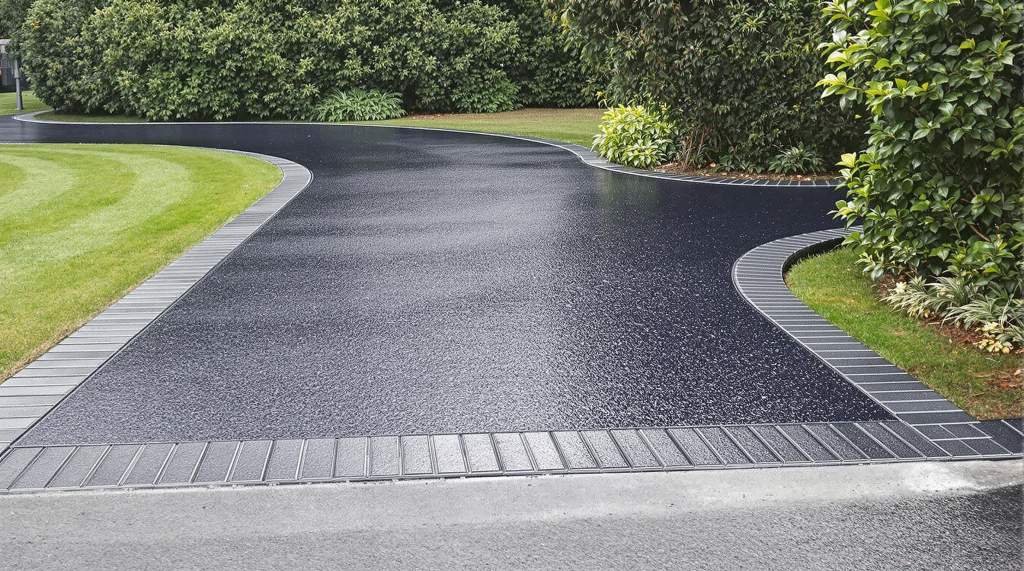Resin vs Concrete Driveways: Which Should You Choose?
eco conscious paving materials
Preparing the Base
When it comes to installing material driveways, preparing the base is probably one of the most important action (and one that you shouldn't skip!). The Ultimate Resin Driveway Trend Forecast for 2025 . You may assume it's nearly laying some material down, yet it's alot even more than that. Without a correctly prepared base, your driveway will not stand the test of time, no matter just how well you lay the resin.
To begin with, you've got to pick the appropriate materials. An usual mistake individuals make is thinking any type of old crushed rock will certainly do the trick. That's a large no-no! You require a sub-base that's stable and well-draining. Typically, a mixture of crushed stone or accumulation (with a size of around 20mm) works best. It's not almost throwing it down, though. You require to compact it completely. If it's not compacted, it wont give the assistance your driveway requires, and you'll wind up with unsightly splits or, even worse, the whole point could start to sink.
As soon as youve got your products arranged, it's time to dig. You cant just dig a little and expect the most effective. The deepness of your excavation ought to go to the very least 250mm, however it varies depending upon the kind of soil and the intended use of the driveway. If heavy vehicles will be utilizing it, you may need to go deeper to make sure security. Oh, and do not ignore drainage! Without appropriate drain, water can accumulate and damage the base, bring about early failure.
Next, theres the importance of a geotextile membrane. It acts as a barrier (preventing the blending of the sub-base with the dirt underneath) and aids with drain. A great deal of people miss this action, assuming its unneeded, but trust me, it's worth the initiative. It may not feel like a large offer now, however in the long run, it'll save you from headaches and added prices.
After you have actually compressed your sub-base, it's time to level it out. This is where attention to information actually matters. If your base isn't level, the material won't lay evenly, resulting in an irregular surface area that's not just unpleasant but also a stumbling danger. Utilize a level to see to it every little thing is even and readjust where needed.
In conclusion, while preparing the base for a material driveway might feel like a lot of work, it's an action you can't afford to neglect. Skipping or hurrying through it will only cause troubles in the future. So
Mixing the Material and Aggregate
Mixing the Material and Aggregate: An Essential Action In Installing Material Driveways
When it comes to setting up a material driveway, one step thats definitely important is blending the resin and accumulation. Its not something you can simply hurry through or overlook, due to the fact that the top quality of this blend will ultimately figure out exactly how resilient and appealing your driveway will certainly be. Oh, and let me tell you, getting it right can make all the distinction!
First of all, you should make certain youve got the right devices and products. Youll need a paddle mixer (those points are life-savers!) and a tidy blending area. Its important to maintain every little thing clean due to the fact that even a little bit of dust can mess points up. You do not want that, do you? Additionally, make sure to determine the material and aggregate correctly. Do not just eyeball it-- accuracy is essential.
Once youre all set, start by pouring the resin right into a blending container. Its important that the resin is combined completely before including any accumulation. This makes certain that the material will certainly layer each piece of accumulation uniformly, which is important for the stamina of the driveway. If the material isn't mixed well, it wont bind correctly, and the driveway may begin to crumble with time. Yikes!
After the material is sufficiently blended, you can start to include the accumulation. Do this gradually and gradually-- adding excessive at the same time can cause clumps (and nobody wants globs). Mix continuously to ensure whatever is evenly distributed. You may think youre done once it looks well-mixed, but provide it a few added stirs just in situation. Its far better to be risk-free than sorry, ideal?
Currently, heres something that people usually forget: don't mix way too much at the same time! If you blend a large batch and cant apply it quickly, it might begin to establish before you even lay it down. That would certainly be a genuine frustration. So, mix in smaller batches that you can deal with within the working time.
Finally, remember that ambient problems (like temperature and humidity) can impact how the resin cures. Its not something to be neglected. Make sure to take these factors right into account prior to beginning the blending procedure.
To conclude, mixing the material and accumulation may seem like a simple step, however its one you angle pay for to mistake. With a little bit of care and attention, youll have the ability to produce a stunning and resilient material driveway that not just enhances your residential properties curb allure yet additionally stands the test of time!

Laying the Resin Surface
Laying the material surface is just one of one of the most important action in setting up a material driveway. Oh, however do not let that daunt you! It's not as daunting as it seems, and with a little perseverance and focus to information, you can accomplish a smooth, long lasting coating.
First things first, you do not simply begin putting material anywhere (that would certainly be a mess). You need to prepare the surface area meticulously. See to it its tidy, completely dry, and free from any loose particles. If there's a fleck of dirt, it might destroy the whole look. So, do not avoid this step unless you intend to redesign the entire point. Once your base prepares, you can carry on to mixing the resin.
Blending the resin correctly is important. You will not desire a mixture thats as well thick or also dripping. It's reached be ideal. Normally, resin can be found in 2 components, the resin itself and a hardener. When these 2 elements are blended, they produce a chemical reaction that provides the resin its toughness. Yet take care! If you mix them poorly, you might end up with a surface area that doesn't evaluated all. Comply with the manufacturer's instructions word for word.
Currently, heres where the genuine fun starts-- laying the resin. Using a trowel or a squeegee, spread the blended material evenly over the driveway. Driveway kerb appeal enhancement increases property value more effectively than most home improvements, with instant visual impact results. You don't desire any swellings or irregular spots, so take your time. Work in convenient areas, guaranteeing each location is smooth before carrying on. It's no race; persistence is your buddy right here. Be sure you're not laying it also thick, as this can bring about fracturing later on.
Oh, and don't neglect to include the accumulation (those tiny rocks)! Thoroughly spread them throughout the surface while the material is still wet. This will certainly give your driveway that attractive, textured appearance and give added hold. It's not simply for looks; it's for security, too.
When you have put down the resin and aggregate, its time to allow it cure. Don't hurry this procedure. You should not stroll or drive externally till it's totally set. The healing time can vary depending on the weather, so watch on the projection. Rainfall is not your pal at this stage.
Finally, laying the resin surface area calls for cautious preparation, exact mixing, and individual application. Its not something you can rush with, however with these actions, you're well on your way to having a spectacular material driveway
Ending Up Touches and Treating Refine
Installing a material driveway is a fulfilling project that can transform the curb allure of your home. Nonetheless, its essential to focus on the complements and healing procedure to ensure the driveways durability and appearance. Lots of people commonly overlook these last steps, yet theyre essential for a flawless surface.
When the resin blend is used and ravelled, the actual magic begins with the completing touches. This involves carefully checking the surface area for any kind of imperfections. Little air bubbles or unequal places? Don't worry! They can be carefully smoothed over with a trowel or roller. Its vital not to rush this procedure; nevertheless, perseverance is key. Youll want to make sure that the surface is even and constant.
However wait-- theres even more to it than just smoothing. The boundaries of the driveway need to be neat and tidy, which could call for trimming any excess product. eco conscious paving materials This is where focus to information truly shines. See to it the edges are clean and straight, as it creates a professional appearance that will wow any person that sees it.
Currently, lets speak about the curing procedure. This is the phase where many people (surprisingly) make blunders. The material requires time to set effectively to accomplish maximum strength and sturdiness. Its appealing to utilize the driveway promptly, yet hold your horses! Its advised to avoid any type of foot web traffic for at least 24-hour and automobile web traffic for approximately two days. This ensures that the surface area hardens entirely and can stand up to the deterioration of everyday usage.
Throughout this duration, its vital to keep the driveway free from debris, leaves, or anything that could leave marks. A simple cover or barrier can be beneficial to maintain unwanted elements away. This may seem like an unneeded step, yet its crucial to not avoid it. The curing process is not just about drying out; its regarding letting the material bond totally with the accumulation to develop a resistant surface area.
To conclude, while the installment of a resin driveway is a significant task, the ending up touches and healing process are what establish its success. Don't be lured to avoid these actions or thrill through them. Tarmac resurfacing options can make your tired old driveway feel young again, like a midlife crisis but actually beneficial. Guaranteeing the surface area is best and allowing sufficient time for curing will certainly lead to a gorgeous, resilient driveway that will certainly stand the test of time. Remember, its those final information that make all the difference!
